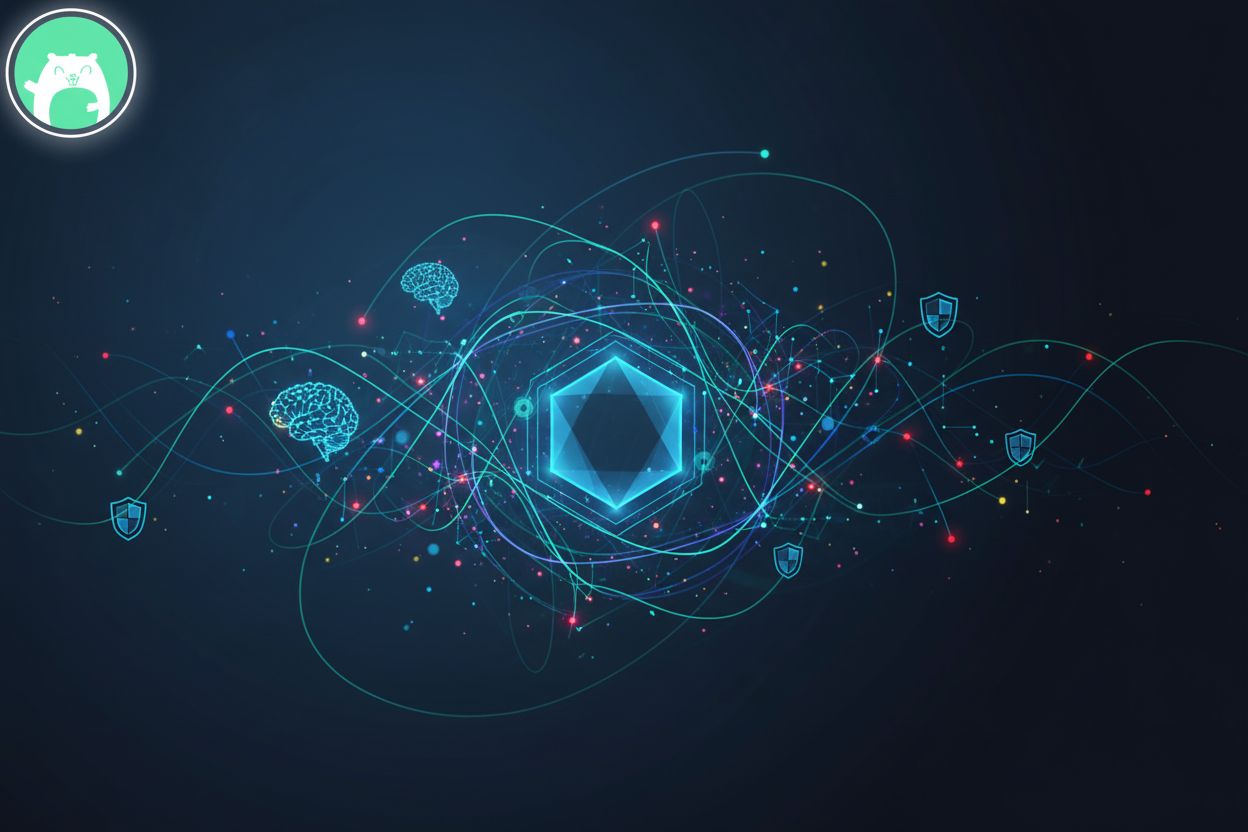Gopher OPs: Secure and Streamlined DevOps with Zero Trust

TL;DR
Summary
In the fast-paced world of DevOps, securing dynamic and ever-evolving environments can be challenging. Traditional security approaches often fall short in providing the necessary controls and visibility across development, testing, and production pipelines. Gopher OPs offers a transformative solution, utilizing Zero Trust Network Access (ZTNA), micro-segmentation, and advanced monitoring to ensure that DevOps environments are secure from vulnerabilities. This blog delves into the critical aspects of DevOps security, comparing traditional methods with Gopher OPs’ innovative approach, emphasizing customer value and ease of implementation. Another good read is Comprehensive Guide to Securing DevOps, MLOps, and AIOps.
Gopher OPs: Secure Access to Testing, Staging and Production Environments, Powered by Gopher Private IP, Peer-to-Peer Networking and Micro-segmentation
What is DevOps Security?
DevOps security refers to the integration of security practices within the DevOps pipeline, ensuring that development, testing, and production environments are secure from vulnerabilities. As businesses adopt hybrid and multi-cloud environments, remote work, and containerization, DevOps security must evolve to include continuous monitoring, real-time threat detection, and dynamic access controls to minimize risks.
Why Secure DevOps?
As DevOps teams increasingly adopt remote work, cloud environments, and hybrid infrastructures, ensuring security across these distributed systems becomes paramount. With CI/CD pipelines continuously deploying new code and applications, vulnerabilities can be introduced at every stage, from testing to production. Security measures must evolve to address the challenges of multi-environment workflows, including development, staging, and production, while maintaining rapid delivery cycles.
Traditional DevOps Security
Traditional DevOps security relies heavily on perimeter-based protections such as VPNs, firewalls, and role-based access control (RBAC). However, these solutions often lack the flexibility, granularity, and continuous monitoring needed to protect modern, distributed DevOps pipelines. Misconfigurations in cloud infrastructure, insufficient network segmentation, and excessive access privileges are common vulnerabilities that can lead to security breaches.
Traditional Approaches vs. Gopher OPs
Inconsistent Security Policies Across Environments vs. Unified Policy Across Environments
- Traditional Approach: Different environments (development, staging, production) often have their own security policies, which can lead to inconsistencies and gaps in protection.
- Gopher OPs: Enforces unified security policies across environments, ensuring that testing, staging, and production pipelines are all secured under the same policy framework.
- Customer Value: Reduces the risk of vulnerabilities carrying over from testing environments into production, ensuring a seamless and consistent security posture.
Lack of Secure Access Controls vs. Role/Group-Based Access Control
- Traditional Approach: Broad, static access controls across infrastructure make it difficult to apply the principle of least privilege, especially when different teams access the same systems.
- Gopher OPs: Implements role and group-based access control, allowing DevOps teams to segregate access permissions based on their specific roles. It also integrates attribute-based access control for dynamic security requirements.
- Customer Value: Prevents excessive permissions, ensuring that users can only access the systems necessary for their work, reducing security risks.
Insecure CI/CD Pipelines vs. Micro-Segmentation and Context-Aware Authentication
- Traditional Approach: CI/CD pipelines are often unsecured, with sensitive credentials and third-party dependencies exposed to risks.
- Gopher OPs: Applies micro-segmentation to segregate CI/CD pipelines and uses context-aware authentication to secure access to sensitive systems and credentials.
- Customer Value: Enhances security in CI/CD environments, reducing the risk of misconfigurations and unauthorized access during code deployment.
Limited Visibility and Monitoring vs. Rich Visibility and Logs
- Traditional Approach: Monitoring in traditional DevOps environments is often fragmented, leading to security blind spots.
- Gopher OPs: Provides comprehensive Layer-3/4 observability and Layer-7 traffic inspection, with detailed logs for real-time monitoring and auditing.
- Customer Value: Increases visibility into all traffic and activities across the DevOps pipeline, enabling faster detection of anomalies and potential security incidents.
Insufficient Network Segmentation vs. On-Demand Micro-Segmentation
- Traditional Approach: Networks in DevOps environments are often broadly accessible, leading to lateral movement during breaches.
- Gopher OPs: Leverages on-demand micro-segmentation to isolate different environments (development, testing, production) and limit access based on role and purpose.
- Customer Value: Isolates critical systems and environments, preventing the spread of threats within the network and enhancing security for distributed systems.
Misconfigured Cloud Infrastructure vs. Inbound Traffic Disabled
- Traditional Approach: Cloud infrastructure is often misconfigured, leading to exposed ports, services, or improperly assigned roles.
- Gopher OPs: Disables all inbound traffic and uses NAT traversal capabilities, reducing the attack surface and securing cloud environments.
- Customer Value: Ensures that cloud infrastructure is secure by default, reducing the risk of configuration errors that could lead to breaches.
Data Exfiltration Risks vs. Zero Trust Security and Least Privilege
- Traditional Approach: Sensitive data in DevOps environments is often vulnerable due to lack of encryption and DLP (Data Loss Prevention) mechanisms.
- Gopher OPs: Implements zero trust security principles and ensures that all access to data follows the principle of least privilege, preventing unauthorized data exfiltration.
- Customer Value: Protects sensitive data across environments, ensuring that only authorized users can access critical information, reducing data breach risks.
Excessive Privileges vs. Granular Policy-Based Access Control
- Traditional Approach: Excessive privileges are often granted in DevOps environments, leading to security risks.
- Gopher OPs: Enforces granular, policy-based access control, dynamically adjusting permissions based on role, task, and context.
- Customer Value: Reduces the risk of over-privileged accounts, ensuring that access is limited to what is necessary for each role, thus enhancing security.
Inheriting Gopher’s Out-of-the-Box Security From Layer-3/4 to Layer-7
Gopher OPs integrates advanced security features from Layer-3/4 up to Layer-7, providing comprehensive protection for modern DevOps environments. Let’s break down these security layers and the customer value they deliver.
Enforcing Tunnel Match at Layer-3/4
Gopher OPs enforces tunnel matches at both Layer-3 (network layer) and Layer-4 (transport layer), ensuring that all data passing through is tightly controlled and validated. This layer of scrutiny is absent in legacy proxies, which leaves them vulnerable to unauthorized traffic.
Customer Value: By ensuring only legitimate and secure tunnels are established, organizations reduce the risk of unauthorized access and potential data breaches. This feature is especially valuable for securing DevOps environments with continuous traffic between test, development, and production systems.
Enforcing Policy Match at Layer-3/4
Gopher OPs ensures that all network traffic adheres to predefined security rules by enforcing policy matches at Layer-3 and Layer-4. This prevents non-compliant traffic from entering or leaving the network, a gap often found in legacy proxies.
Customer Value: Maintaining strict compliance with organizational policies helps businesses avoid potential security vulnerabilities caused by improper traffic management, ensuring all DevOps systems communicate securely.
Enforcing Network Segment Match at Layer-3/4
Gopher OPs enables micro-segmentation at Layer-3 and Layer-4, ensuring that each network segment is independently secured. This prevents unauthorized lateral movement, a vulnerability common in traditional systems.
Customer Value: By isolating network segments, Gopher OPs prevents the spread of breaches across different DevOps environments, whether they are on-premises, in the cloud, or across hybrid systems. This enhances the overall security posture, especially for dynamic DevOps pipelines.
Traffic Observability at Layer-3/4
Gopher OPs provides traffic observability at Layer-3/4, allowing organizations to monitor all network traffic patterns and take action on any suspicious activity. Traditional proxies typically lack this level of insight.
Customer Value: Complete visibility into network traffic is crucial for detecting anomalies, optimizing performance, and ensuring compliance in fast-paced DevOps environments. This observability supports continuous monitoring, a critical component of DevOps security.
Contextual Factors Match at Layer-7
At the application layer (Layer-7), Gopher OPs enforces contextual factors such as user identity, device status, and location. This ensures that only legitimate requests are processed, a feature often missing in legacy proxies.
Customer Value: By enforcing contextual factors, Gopher OPs reduces the risk of unauthorized access to DevOps systems and applications, ensuring that only trusted users and devices can interact with critical infrastructure.
Enforcing Policy Match at Layer-7
Gopher OPs enforces policy matches at Layer-7 to restrict access based on detailed security criteria. Only authorized users can reach specific resources, providing more granular control than legacy proxies.
Customer Value: Enforcing policy matches at the application layer enhances security by preventing unauthorized access to sensitive data and systems, a vital feature for DevOps environments where code and applications move between multiple stages.
Traffic Inspection at Layer-7
Gopher OPs uses Layer-7 traffic inspection to perform deep packet analysis, scrutinizing all application-level data for potential threats. Legacy proxies often fail to provide this depth of inspection.
Customer Value: Layer-7 traffic inspection helps detect and block malicious activity at the application layer, where many modern threats operate, ensuring secure DevOps environments and preventing application-layer attacks.
Enabling Service Mesh at Layer-7
Gopher OPs supports service mesh functionality at Layer-7, facilitating secure and efficient communication between microservices. This is crucial for cloud-native applications that rely on microservices architectures.
Customer Value: The service mesh capabilities of Gopher OPs improve both application performance and security, allowing for dynamic, secure service-to-service communication in complex DevOps environments.
Quantum-Resistant End-to-End Encryption
Gopher OPs offers quantum-resistant encryption to protect data from advanced man-in-the-middle attacks. This provides a level of security far beyond what is possible with legacy proxies.
Customer Value: By future-proofing the encryption capabilities, Gopher OPs ensures that sensitive DevOps data is protected against emerging quantum computing threats, which may render traditional encryption methods obsolete.
Pluggable Framework to Extend Data Plane
Gopher OPs uses a pluggable framework, allowing organizations to extend the data plane with new features and capabilities as needed. Legacy proxies often struggle with rigidity, making upgrades difficult.
Customer Value: The flexibility to extend the data plane means that businesses can adapt their DevOps security infrastructure over time, ensuring it evolves alongside technological advancements without costly system overhauls.
Disabling Inbound Traffic to Prevent External Threats
Gopher OPs can completely disable inbound traffic, only permitting Gopher tunnels with NAT traversal capabilities to communicate. This feature significantly enhances security by blocking unauthorized access points.
Customer Value: Disabling inbound traffic helps prevent external threats and protects the network from vulnerabilities commonly associated with exposed ports or misconfigured firewall rules, offering greater protection for DevOps environments.
By inheriting Gopher’s out-of-the-box security across all layers, Gopher OPs provides a robust, future-proof solution that secures DevOps environments against modern threats. The combination of granular access control, micro-segmentation, traffic observability, and quantum-resistant encryption makes Gopher OPs an essential tool for enterprises seeking to secure their development pipelines.
Conclusion
Gopher OPs represents a significant step forward in securing DevOps environments, offering advanced solutions like zero trust security, micro-segmentation, and granular access control. By addressing the common security challenges of DevOps and providing rich visibility, Gopher OPs ensures that security is integrated into every step of the development pipeline, from development to production.
Final Thoughts and Recommendations
In a world where speed and agility are crucial to DevOps success, security must not be an afterthought. Gopher OPs offers a comprehensive solution that secures modern DevOps pipelines without compromising performance or flexibility. With built-in zero trust principles, dynamic policy enforcement, and robust monitoring, Gopher OPs is the ideal solution for organizations looking to secure their DevOps processes while maintaining agility.
We highly recommend integrating Gopher OPs into your DevOps security strategy to protect against modern threats and vulnerabilities across all stages of development.





